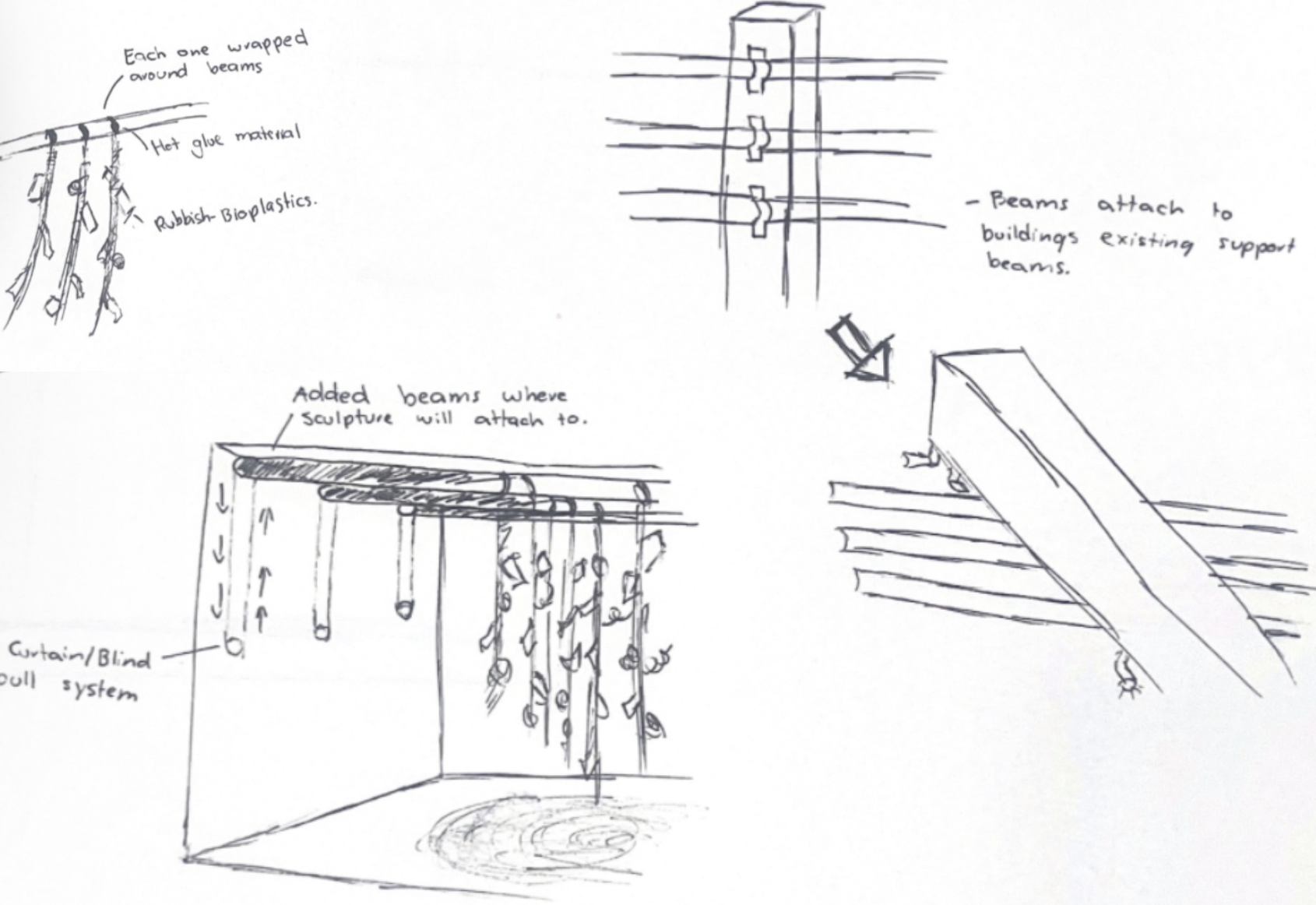
Current DAMAGE
Project: IMMERSIVE DESIGN
Type: SUSTAINABLE Installation (Hypothetical)
Size: 138 sqm approx.
Location: Gallery in Melbourne, Victoria
Year: 2023
5 ECOLOGICAL AIMS
To create an installation that raises awareness of the negative impacts plastics have on underwater ecosystems
To create a tactile representation of ocean tide movements that move to lower and higher levels using audience interaction
To integrate naturally sourced materials that are readily recyclable and able to be repurposed, ensuring that the structural design aligns seamlessly with circular design principles
To imitate the movement of ocean currents to portray the natural forms and functions.
To exhibit the negative implications of plastic pollution and shift audiences' attention to the mass scale of its encroachment in the oceans
PROCESS
CONCEPT DEVELOPMENT AND RESEARCH
PROTOTYPE DEVELOPMENT
BIOPHILIC DESIGN ELEMENTS
Diffuse Light
Blue-toned lights create an oceanic atmosphere, bouncing off plastics to reflect shifting strands of light.
Risk and Peril
The oobleck floor forces continuous movement; stopping means sinking. This symbolises how humans disrupt natural systems.
Biomorphic Forms and Patterns
Structural layouts mimic ocean currents, echoing the Antarctic Circumpolar Current and surrounding flows.
Connection with Natural Systems
The space mirrors ocean tides and movement, deepening audience connection to the natural world.
outcome
Current Damage is an immersive installation that highlights the impact of plastic waste on ocean ecosystems and draws attention to the intrusion of pollution into the ocean currents, generating an immersive experience that offers a fresh perspective on hidden underwater damage. This is reflected in the maze-like journey embarked on by visitors as they walk amongst an oobleck floor, stimulating the feeling of walking on water whilst submerged amid layers of plastic. To ensure that the installation is disposed of and composted responsibly at the conclusion of the exhibition, sustainably sourced materials and experimental bioplastics have been utilised.












